Ever notice that when you try to preform shadow recovery / pull shadows during post processing that sometimes it works and sometimes it’s a disaster? Did you know your shadow recovery success is directly related to your choices in the field?
In this video, we’ll talk about what shadow recovery actually does, why those areas get noisier, how to tell how noisy they’ll get, and – most importantly – what you can do in the field that will make a difference back home on the computer.
This 7 minute video will change how you think about shadows, ISO, and it’ll modify your field technique forever! Jump in!
(Note – at the 3.42 mark there’s a typo in the note above ISO equivalency that says 6000 that should say 16000 – I missed the “1” when I was making the caption.)
.
PS – If you enjoyed this post, I think you’ll REALLY like my e-books and video workshops! Thousands of pages and hours of videos filled with tips, tricks, and techniques – all my best content! Check ’em out – click here (hey, it’s free to look).

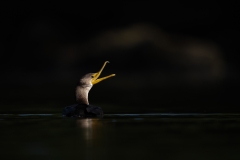
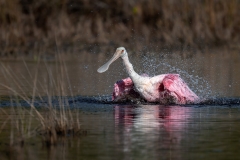
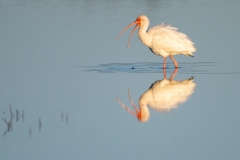
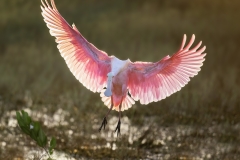
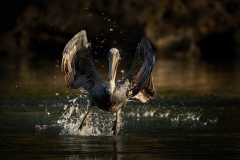
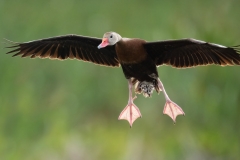

While landscape photographers will often bracket shots when there is a great dynamic range in a scene it is seldom considered for wildlife subjects, even when the animal is stationary and there is time to take a 2-3 shot burst and use the camera’s auto bracketing capability.
Still reading your ebooks. Lots of info to absorb. I need some help. My D80 just crapped out. I get an “err” message that wont go away. Tried all the normal things: Cleaned the contacts, lens, and mirror. No luck. Seems that it’s a common D80 problem.. I don’t think that it’s cost effective to get it fixed (?). Any other possible fixes? Well I probably need a new camera. I have a very limited budget so I would like a camera that will allow me to use my DX lenses. Please help. Thanks. A devoted fan. Lester Sussman PS:… Read more »
Thank you for debunking the belief that raising ISO increases the sensitivity of the sensor, when it really just amplifies the base signal.
Excellent reminders!
IN this video you made so much sense relating it to static on the radio. Thanks
again I really like your short lessons. Even when working with Nikon since ages I still learn from you. Thanks a bunch, and keep on, your audience is very thankful!
Speaking of signal to noise ratio, the new music is a vast improvement.
Oh, yes, and the content remains first rate.
Thanks
Speaking of signal to noise ratio, the new music is a vast improvement.
Oh, and the content is first rate, as always.
Thanks
Hi Steve, I’ve been watching on YouTube for a few months, your videos are highly informative and enjoyable. thank you for sharing your great knowledge and experience. There was just one thing I didn’t understand in your Stop Struggling with Shadow Recovery video. You made a comment about the Nikon D5 and D6 being different in terms of ISO and shadows than other cameras, I don’t understand what you meant. Could you please expand on that? I have always worked on the theory that most of the data captured by the sensor is in the highlights, and to a lesser… Read more »
The D5/6 are optimized for high ISO work and their sensors exhibit more read noise than “normal” sensors do at lower ISOs. The high SnR at low ISO overcomes this easily, however, start pulling shadows and you find the shadows can often fall apart in a hurry. You’re also correct on the amount of data stored and the way it’s stored (highlights aha etc most and it drops as you go down). However, in the tests I’ve done unless you are at base ISO, overexposing and pulling back down doesn’t do much (or any) good. It’s like turning up a… Read more »
Many thanks for the comprehensive reply Steve. I have a D5, what did you find to be the “sweet spot” regarding ISO setting?
Excellent video. With the D3 I found that -1.0 EV resulted in the worst image quality but also that more often than I would have expects, a +1.0 EV image provided better color fidelity than a 0.0 EV image. This was with the 13 years old D3 sensor so not directly applicable to newer sensors and AD processors but it is worth testing as the time needed and cost is trivial in the overall scheme of things.
Hello Steve ! Here is Francois from France country. Like every one of your videos, this is another brilliant video. Very clear explanations, wonderdul examples with the volume of loudness. every time great to hear you, every time we learn something! thanks !
As always, a great presentation with useable information. Thanks Steve!
Nice Job. Slight error/typo on the backlit bird recovery (it’s ISO 16,000 equiv).
It’s all really just about *light*; because light equals data. Darker shadows contain less light/data, midtones contain more light/data, avoiding shadows means more light/data, and larger image areas/sensors receive/record more light/data. And cropping is detrimental because it is discarding light/image circle/image area… it doesn’t really matter if the cropping is done by using a smaller sensor, or in post.
OMG I’m an idiot. I saw your comment and I was like, no, that said 16000 and then I checked. D’oh!! Thanks for letting me know and I will post a note here and on YT about it.
And I agree 100% – it’s all about getting the best SnR. A point I pound in regularly in my exposure book 😀
The thing is, I think once the concept of SnR is grasped, anything with ISO is easy. I should do a video dedicated to it one day.
Great information Steve. Sounds to me like in the field, I should consider bumping up ISO last in the order of ways to obtain correct exposure. Also, how effective would it be in scenarios of back light and/or dark toned subjects to shoot (RAW) a stop or two under correct exposure at the limits of effective shutter speed and aperture when a higher shadow push might be anticipated?
ISO is there for a reason and if you need it, you should use it. If keeping you ISO really low means you’re not able to get the DoF or action-freezing shutter speed required, it’s not worth the trade. Of course, you have to strike a balance too – you don’t want perpetually high ISOs either. The key is to keep it as low as is reasonable for your intended image.
Particularly depends on if your camera is near ISO invariant (most modern Nikons) or not at all ISO invariant (all single digit Nikons)… If you own a D500 you could never raise your ISO above 400, let the image underexpose if it is going to, recover in post as needed, and never pay a notable penalty.
The recovery will still make the image look like whatever ISO was needed (but not used), and very dark images are hard to evaluate, so there’s no benefit to allowing it to underexpose excessively even if ISO invariant.
Very true. I talk about quite a bit this in my Exposure book 🙂
But the reason I recommend just shooting it (close) to the correct exposure is exactly what you said – it makes image review easier.